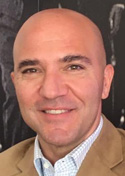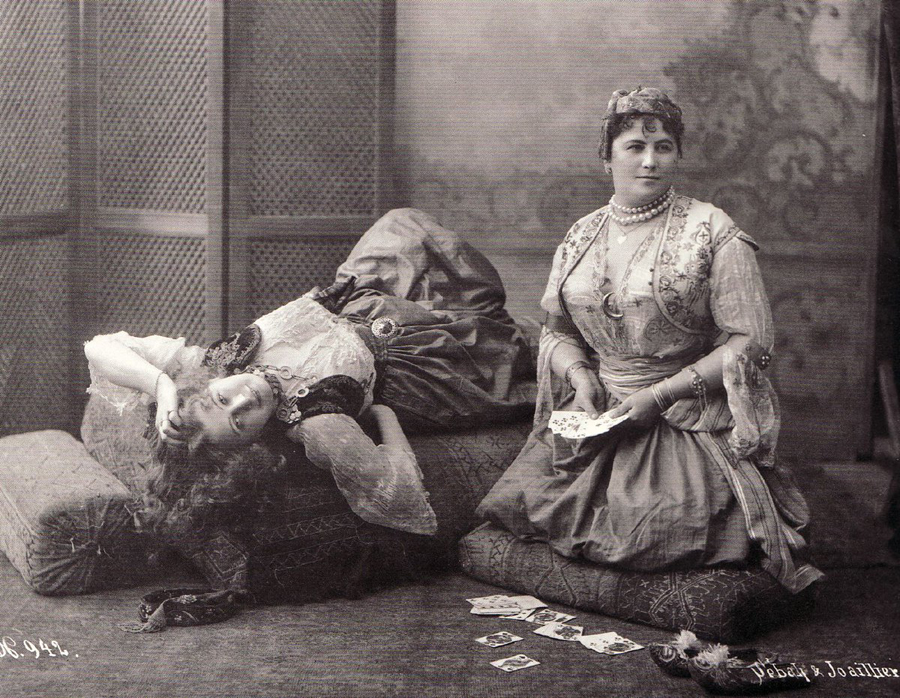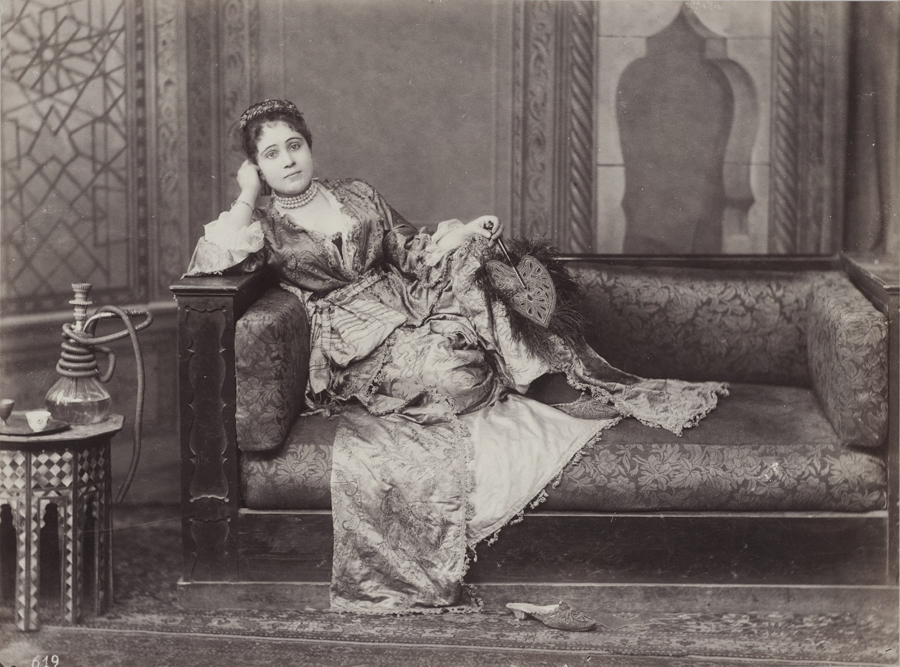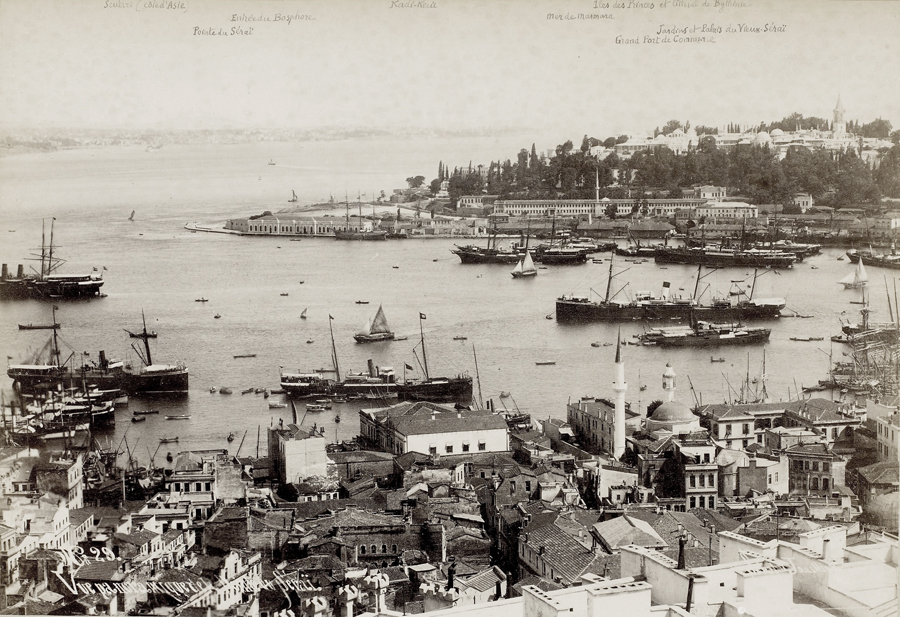
The Interviewees

Interview with Fabrizio Casaretto, March 2021 - Türkçe
1- When did you first realise you were a direct descendant of the Joaillier family? Did this realisation trigger your curiosity on your own family history?
I had known since my childhood that there was a photography connection in our family history, but I never really cared. One day, when I was in my 30’s at the Catholic cemetery, my mother said “Look, this is our photographer Sabah” as she passed by Pascal Sébah’s grave. When I asked for details, she said that he was not actually him, that his partner was a member of our family and that this partnership was named Sébah & Joaillier during the Ottoman period, and the conversation just ended that day, but I became curious. The internet was just developing and I did reach some information, even if it was meagre, and it started an interest in me. Slowly I started digging through family albums and documents. There were some photographs from that period, the most valuable pieces of my collection today. If I had known that they were so famous, maybe that would have sparked a drive to become a professional photographer at a young age, after all, I was already interested on an amateur level. I started developing my collection, and I would mainly find these items from abroad. Then, thanks to the Levantines conferences in the 2010s, I started to meet some very special people, and the progress of knowledge and the collection accelerated. Around this collection I have done various activities such as a website, exhibitions, presentations, trademark registration within this framework of different strands and the work continues. This is not just a piece of family heritage, it is an Ottoman legacy, and rather than retaining it locked closets I do not hesitate to open the collection pieces to the culture and education of the public.
2- You are of Italian Levantine ancestry on your father’s side, the 7th generation after the first arrival to Istanbul in 1822. Do you know much about this first individual such as from where in Italy why he left, what profession he pursued etc.?
My father’s side is indeed Italian, Giovanni Batista Casaretto, who was the first arrival who landed in the Ottoman Empire in Istanbul on November 7, 1822. He even received his passport from the Odessa consulate on November 1. It is possible to find such details in our documents. We don’t know why he came via Odessa yet, but our origin is the village of Zoagli in Liguria’s capital, Genoa. It is a very beautiful place. The documents record him as a ‘maccaronaro’, ie a pasta maker. There is no information about why he came to the Ottoman Empire, but probably drawn by the opportunities offered by the country as many foreigners migrated from the West at that time.
3- Your mother’s Levantine ancestry is also deep in time going back to a Royalist Frenchman escaping the revolution in France in 1789 and selecting Ottoman Aleppo as his new refuge. Do you know why he chose this location and again do you know more about him apart from his name?
My mother’s side is predominantly French. I have built our family tree and it contains about 450 names today, I continue to add to it as long as I discover more. The branches of my mother side of our family tree are many and wide, and so it is not as easy as going up by following the last name like Casarettos. If I start from my grandfather G. Vidal, French diplomacy connection comes out. If I start from my great grandfather C. Phlippos, Belgian diplomacy arises. But when my topic is Joaillier, let me go down to that branch of the tree. Originally, it appears from the documents that the photographer’s great-grandfather came first, as his father Antoine was born in 1822 and his grandfather Joseph was born in 1798 also in Istanbul. Joaillier, whose great-grandfather was also named Antoine, was born in 1775, but there is no further information. He probably left the country after the French Revolution in the 1790s. Although there is no concrete evidence from this generation that his spouse was of Syriac origin, Aleppo-born spouses appear in the next generations, that is, despite living in Istanbul, there is an on-going connection with Allepo. As it can be understood from the surname of the family, it can be guessed that there were ancestors in the jewelery business, and later we observe due to incorrect Church transcription, the surname was recorded in the form of Giolliet but it was then crossed out and corrected. Aleppo at that time, was an important Ottoman city and business centre so the selection was possibly due to that attractiveness, but there is no concrete information.
4- Your interest and study in early photography shows that not long after the first photo studios opened in Paris in the 1840s similar businesses entirely run by foreigners and minorities appeared on or near the main commercial thoroughfare of Grand Rue de Pera / Beyoğlu and you were able to show on a map of this area the disposition of these studios in some cases their residences. So is your investigation a bit wider than, or could it go in the direction of also other early photographers of Istanbul?
I have devoted myself to the Sébah & Joaillier studio, due to the family legacy. It is one of my goals to revive this important brand again, maybe not as a photography studio, but in different projects using photographs and other products. The period of partnership is most important to me, that is, the times when my great grandfather was active, the period before with just Pascal Sébah and the later periods with sons and Foto Sabah stages do not interest me much, but of course there are items included in my collection in terms of information and sample products, as it would not be right to delete those periods or pretend that they did not exist. For example, I talk a lot about the mastery and achievements of Pascal Sébah before S&J, not to mention the photographs in Osman Hamdi Bey’s famous book ‘Les Costumes Populaires de la Turquie’, written in French for the 1873 Vienna Fair. Also photographs of the branch in Cairo run by his son Jean Pascal Sébah. Afterwards, the importance of Foto Sabah in the history of the Republic and its successes until 1973 when it closed down. Naturally, as I research the other photographers, I learn, and it gives me much pleasure. Their most important rivals at that time were Abdullah Frères, and other studios such as Kargopoulo, Berggren and Gülmez Frères were just some of them. I got interested in all the owners and histories of these studios. I have a few examples of each studio’s work in my collection, but they are merely samples for display purposes only. All of them can have different features, and it is possible to capture interesting details. Of course, none of them could have guessed how much they would be cared for a century later.
I am moving forward with documents and unfortunately I have evidence that refutes a lot of the misinformation on the internet. Part of my hobby is to rewrite the history of the studio, which pleases me. But something funny also happened, I wanted to open a Polycarpe Joaillier page on wikipedia and the website administrators gave me the answer that the information I had entered could not be verified according to other sources, and I did not know if I should be sorry for this predicament, but I gave up.
5- The Pascal Sebah and Polycarpe Joaillier partnership started in 1885 and continued with subsequent generations and with different partners continued till 1934. This partnership was clearly very successful. Do you think in addition to providing a general service of portrait photography they were able to professionally tap into and cultivate the overseas / visitors market for orientalism through the clear depiction of both ‘tourist interest sites’ and ethnographically realistic local people’s and customs depictions?
Absolutely. The philosophy of the studio was very clear: whatever might be interesting to foreigners should be shot. The booth portraits were their daily work, there are many present and it is not possible to collect from each one, and many old Istanbul families may have a portrait photograph with an S&J stamp in their home. However, outdoor photographs were taken and sold either individually or in album form. No two albums were alike as they were made to order. Order cards would come from abroad and would be send out, and I have a few of these order cards from different countries which are very interesting. The number of photographs such as outdoors, landscapes, street types, buildings, panoramas, etc. is more limited, as they could not photograph them every day, weather conditions were important and material transportation was an elaborate job, it was not like taking thousands of photos on mobile phones today. When I look at my calculations I made and the number of photos in the catalogues they published, I calculate that they may have shot a total of 1600-1700 units in the outdoor category between 1885-1904, and I do not add the before and after periods. Many of these photos are even iconic nowadays, and it is impossible to find the originals for some. Panoramas could not be taken as easily as today. The studio had a total of 4 large size panoramas of Istanbul taken from different points; From the Galata Tower, Bayazıt Tower, Robert College Hill and the extremely rare Çamlıca Hill. Publishing houses producing postcards from 1895 mostly used S&J’s photographs. Historians cite S&J as the most important studio that spread orientalism to the world.
6- You now know a huge amount on this branch of your ancestral family and do you think in the future this body of evidence could lead to another project such as a book or a documentary film?
Projects are in my mind, I have shared them with some people, and the different steps I have taken form the basis of them. I am still writing a book, and I hope to complete and publish it this year, in 2021, but this is a novel, incorporating the interesting and real stories, it will be about both sides of my family and of course the subject of photography will be covered in abundance. I will publish it in different languages and deliver it abroad as well. This book could be used as a script for a documentary or a movie, and I think it might be of great interest to a wide body of people. I also envisage a cultural book project about the studio with lots of photographs.
7- Your archive on the Sébah & Joaillier photos is both in digital and physical format. Presumably the former is easier and cheaper to obtain but do you think the physical photo has to be the ideal in terms of ‘being the real thing’? In a similar way though you have an extensive website displaying many of these photos, would you consider a future exhibition as a way to compliment this showcasing to the public?
Not all the photos on my website are physically in my collection, but my entire physical collection is on my website. I haven’t specified which ones but I can see it myself with an encryption. However, I can say that I have both the largest digital and the physical S&J collection in the world, which should be regarded as normal. When I first scan a physical photo that I cannot find digitally elsewhere and put it on my website, I can state to myself here is a very rare piece, maybe the only one left in the world. If I talk about all of my projects in detail, the excitement will dissipate, so it will be useful to wait with a little curiosity. An exhibition full of original photographs and other products traveling the world is one of my dreams. Maybe the first step can be taken towards the summer of 2021, I am in discussions, but let’s await the easing of this pandemic a little, and secure our health, then I will be able to proceed more comfortably.
8- In 1869 Pascal Sébah gets to know the foremost Ottoman painter Osman Hamdi Bey and your investigations show he arranged for himself to be photographed so he could better depict the person and background in one of his paintings. In addition P. Sébah provided the photographs to the album book of Ottoman costumes prepared by Osman Hamdi Bey for the 1873 Vienna Exhibition. Do you think there could be other photo / art collaborations involving possibly Sébah & Joaillier to uncover in the future?
The relationship with Osman Hamdi Bey started during the Sébah period and continued with Joaillier after Sébah’s death in the partnership. Osman Hamdi made some of the poses he wanted to draw, posed for Sébah, first as a photograph, and then he transferred it to canvases with the framing technique, and this can be seen in several of his paintings. The book ‘Les Costumes Populaires de la Turquie’ is a masterpiece, with a limited print run, and it can be found in important museums and research academies around the world, and it is a prestige for me to have a very well preserved one in my own collection. The studio would make special shots on order, but we cannot know the number of them. For example, there are 16 photos of the Baghdad railway construction and possibly only a limited number of prints were produced for the client. Thanks to Osman Hamdi, there were many shots in the archeology museum. In addition there may be other special shots that have not yet come to light, but forgotten in shelves and boxes.
9- Are there any questions you would like to pose to our readers involving either your family investigation or Sebah & Joaillier studio history that researchers could help with?
I am one of those who think that there is no limit to learning. I am open to all kinds of information, even if I am familiar with the subject, there may be something I will learn in a sentence. I have been working for years to piece together the puzzle, and it will never end. There are many researchers who ask me questions through my website, and sometimes I cannot find an answer, but it encourages me to work and learn. Nowadays, for example, there are pictures of Mehmet Siyah Kalem specially photographed by Sébah. These pictures are kept in the Topkapı Palace Museum. I found it interesting and I am trying to understand when and why he took these photographs.
It is the visual or written evidence that interests me the most about the studio. For example, for Pascal’s son Jean Pascal Sébah it is said that there was an article about that denigrated Joaillier, but what was the context, the why, when and where made me very curious, there may be a quarrelsome or jealous environment in the studio, and tellingly Joaillier was based in Istanbul, Jean Pascal Sébah was generally in Cairo and in the Egypt photographs he signed as only JPSébah despite it being an S&J branch, and not the joint signature… why?
I am open to all kinds of information like this.
Also, if there is a request from different countries for an exhibition, we can discuss this as well.

European women in Ottoman attire, ‘Groupe de femmes en costumes orientaux jouant aux cartes’, Sébah & Joaillier studio photograph, 1885-1904
Turkish Lady, ‘Femme orientale fumant le narguilé’, Sébah & Joaillier studio photograph, 1885-1904
‘Vue panoramique de la pointe du Serail’, 1890s - taken from the roof of their own establishment in Pera.
Interview conducted by Craig Encer


